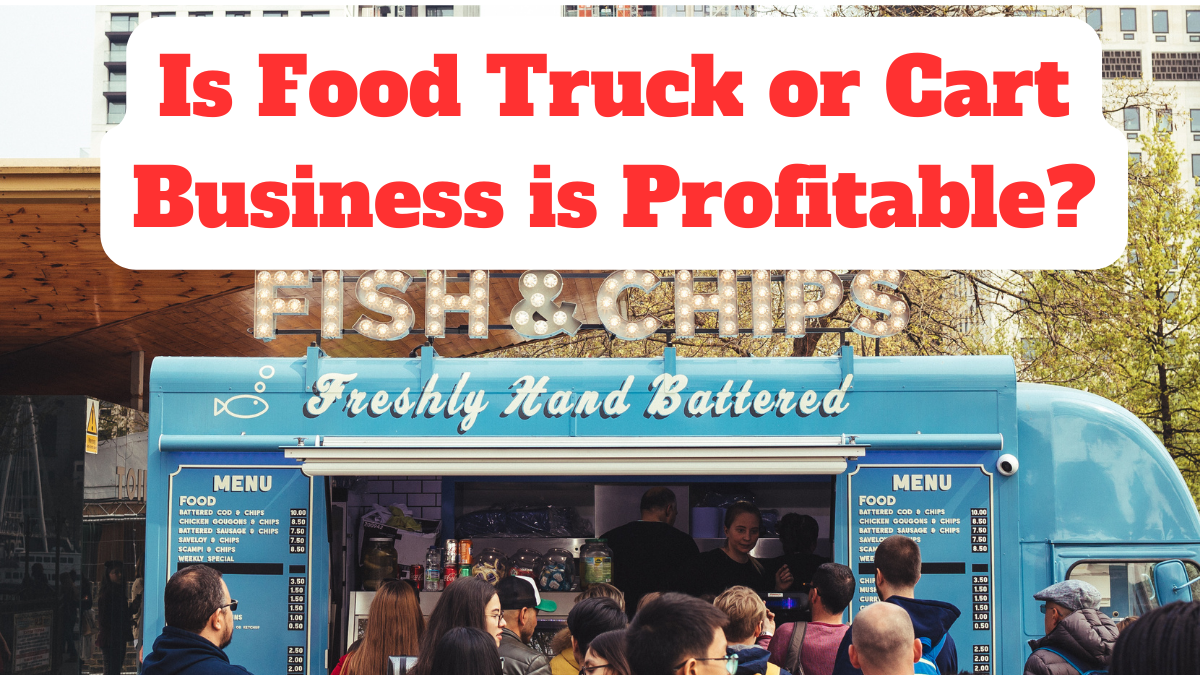Overview of Food Trucks and Carts Business:
The world of culinary entrepreneurship has witnessed a significant transformation in recent years, with food trucks and carts gaining immense popularity. These mobile food businesses offer a unique and dynamic way for chefs and food enthusiasts to connect with customers. In this article, we delve into the profitability of food truck or cart businesses, exploring the advantages, market trends, operational considerations, and success stories.
Rise in Popularity of Food Trucks and Carts Business: The concept of food trucks and carts is not new, but its resurgence in recent times has captured the imagination of both entrepreneurs and consumers. The appeal lies in the ability to bring diverse and high-quality cuisine to various locations, catering to the ever-changing tastes of a mobile and fast-paced society.
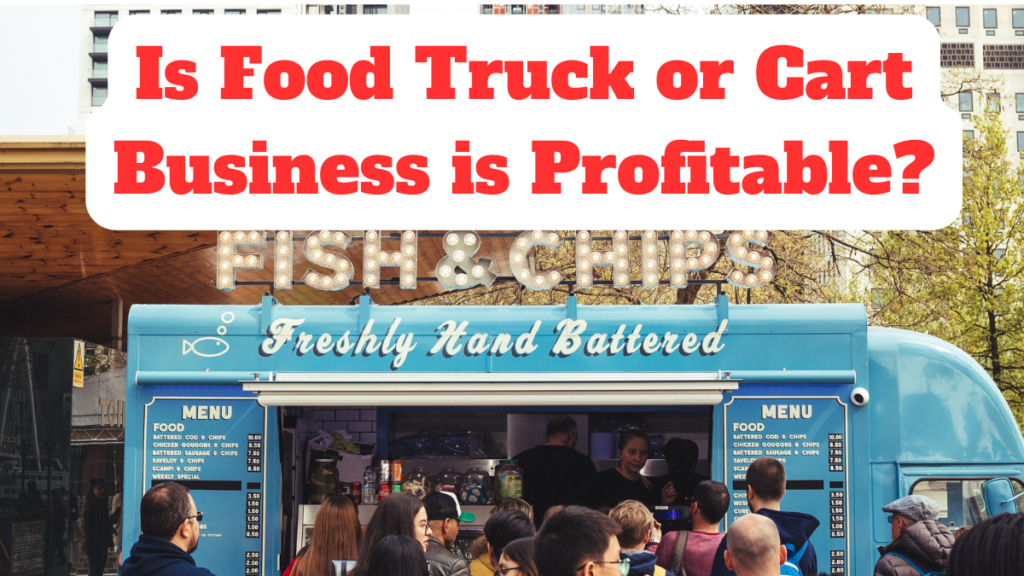
In the future, specifically between 2023 to 2029, the Indian food truck industry is expected to perform well with a Compound Annual Growth Rate (CAGR) of 9.23% approx. Therefore, the industry presents significant growth opportunities for entrepreneurs.
Global Trends: The projected growth of the global food truck market indicates an increase from $19.4 billion in 2022 to a forecasted $26.3 billion by 2027 approx, reflecting a compound annual growth rate (CAGR) of 6.2% spanning the years 2022 through 2027 approx. Global events, economic conditions, and shifts in consumer behavior can influence the food industry. Food trucks that stay attuned to these trends and adapt their strategies accordingly will be better positioned for future growth.
Advantages of Food Trucks and Carts Business:
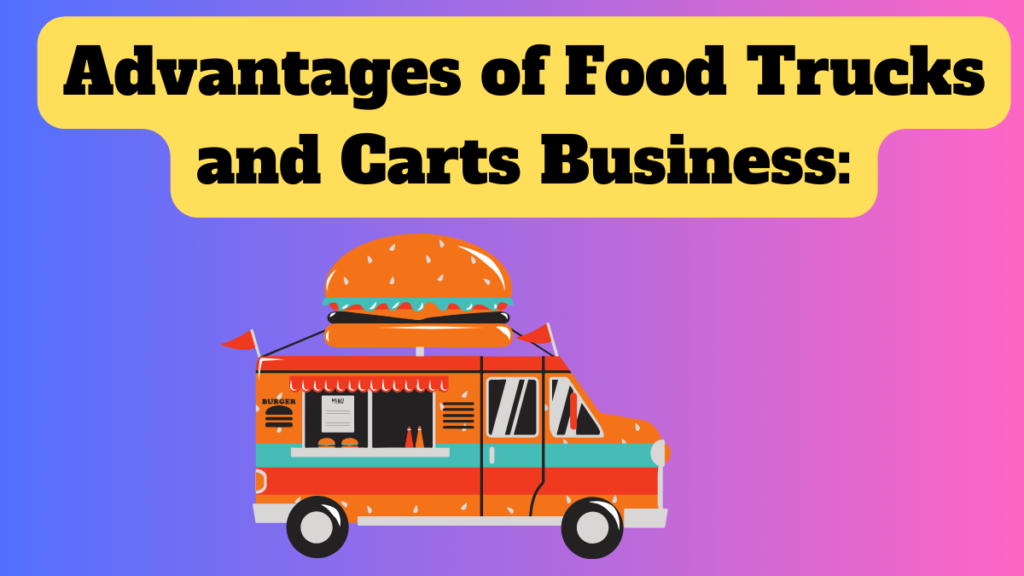
· Mobility and Flexibility:
One of the key advantages of a food truck or cart business is its mobility. Unlike traditional brick-and-mortar establishments, these businesses can navigate different neighborhoods and events, reaching a broader audience.
· Lower Initial Investment:
Compared to opening a restaurant, the startup costs for a food truck or cart are considerably lower. This allows aspiring entrepreneurs to enter the food industry with a more manageable investment.
· Targeted Marketing:
Food trucks and carts can strategically position themselves in areas with high foot traffic or at events that align with their target demographic. This targeted approach can result in a more efficient marketing strategy.
· Adaptability to Trends:
The mobile nature of food trucks enables them to adapt quickly to food trends and changing consumer preferences. This flexibility allows for experimentation and innovation, keeping the menu fresh and exciting for customers.
Market Trends and Demand of Food Trucks and Carts Business:
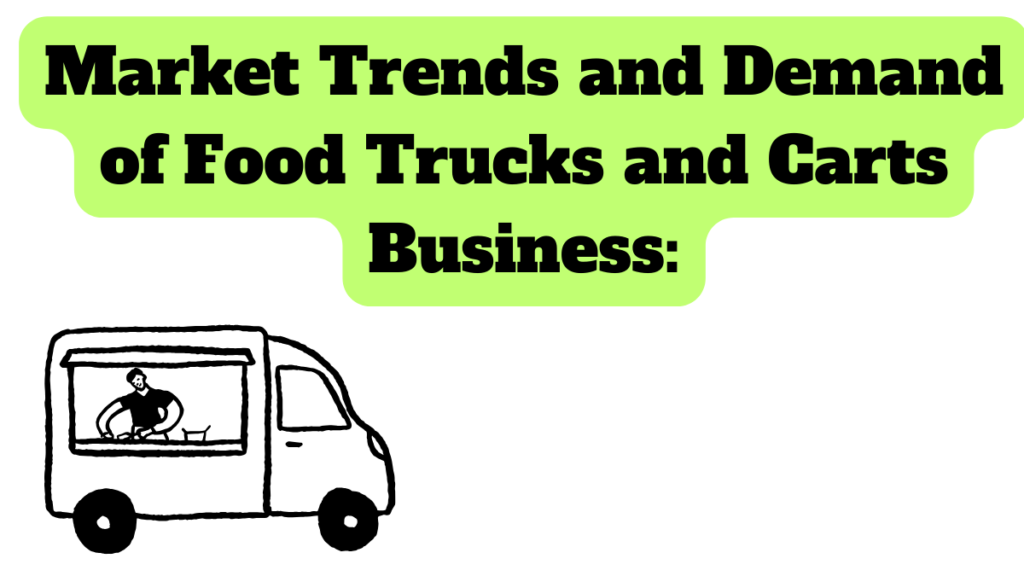
· Shifting Consumer Preferences:
As consumers become more adventurous with their palates, the demand for diverse and unique food experiences has risen. Food trucks and carts, often specializing in niche or fusion cuisines, are well-positioned to meet this demand.
· Urbanization and Busy Lifestyles:
The increasing urbanization and busy lifestyles of modern society have led to a growing preference for convenient dining options. Food trucks and carts provide a quick and accessible solution for people on the go.
· Embracing Diversity in Cuisine:
In an era of culinary exploration, consumers appreciate the variety offered by food trucks and carts. The ability to sample different cuisines in one location adds to the allure of these mobile eateries.
Startup Costs and Investment of Food Trucks and Carts Business:
· Comparing Initial Investment:
Opening a traditional restaurant can entail significant costs related to leasing space, interior design, and furnishings. Food trucks, on the other hand, require a comparatively lower initial investment, primarily focused on the vehicle and kitchen equipment.
· Analyzing Ongoing Costs:
While the initial investment may be lower, it’s crucial to analyze the ongoing costs of running a food truck. Factors such as fuel, maintenance, and permit fees should be considered to ensure a comprehensive understanding of the financial commitment.
· Cost-Benefit Analysis:
Conducting a thorough cost-benefit analysis helps prospective food truck entrepreneurs evaluate the return on investment. This analysis considers both the potential revenue and the various costs associated with the business.
Operational Considerations of Food Trucks and Carts Business:
· Location Strategy:
The success of a food truck or cart heavily depends on strategic location selection. Identifying areas with high foot traffic, events, or popular destinations can significantly impact sales.
· Licensing and Permits:
Navigating the regulatory landscape is a critical aspect of operating a food truck business. Acquiring the necessary licenses and permits ensures compliance with health and safety standards, avoiding legal complications.
· Health and Safety Compliance:
Maintaining high standards of hygiene and safety is paramount in the food industry. Food trucks must adhere to rigorous health codes to protect both the business and the well-being of customers.
· Staffing:
Even with a smaller operational space, food trucks require efficient staffing. Hiring and training personnel who can handle the unique challenges of a mobile kitchen is crucial for smooth operations.
Marketing Strategies of Food Trucks and Carts Business:
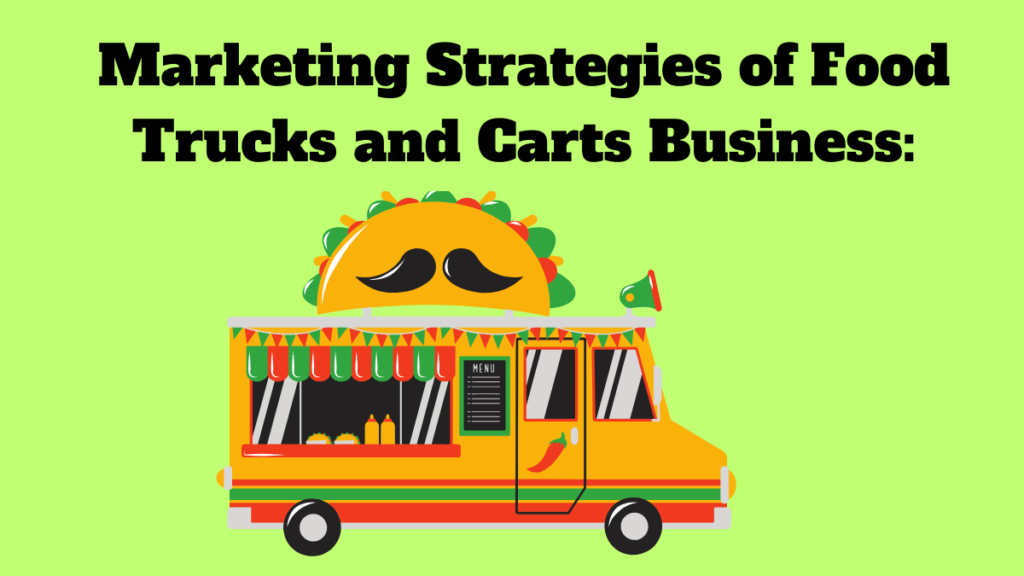
· Social Media Presence:
In the digital age, a strong social media presence is essential for any business. Food trucks can leverage platforms like Instagram, Facebook, and Twitter to showcase their menu, announce locations, and engage with customers.
· Collaborations and Events:
Collaborating with other local businesses or participating in events can broaden the reach of a food truck. This strategy not only attracts new customers but also fosters a sense of community.
· Loyalty Programs:
Implementing loyalty programs, such as punch cards or digital rewards, encourages repeat business. Building a loyal customer base is vital for the long-term success of a food truck or cart.
Challenges and Solutions of Food Trucks and Carts Business:
· Seasonal Impact:
Weather and seasonal changes can impact foot traffic and sales for food trucks. Developing strategies to mitigate the effects of seasonality, such as introducing seasonal menu items, can help maintain profitability.
· Competition:
The growing popularity of food trucks means increased competition. Differentiating through unique offerings, exceptional customer service, and effective marketing is essential for standing out in a crowded market.
· Weather and External Factors:
External factors like adverse weather conditions can pose challenges for food trucks. Planning for contingencies and diversifying locations during unpredictable weather can help mitigate risks.
· Adapting to Customer Feedback:
Customer feedback is invaluable for improvement. Food trucks that actively listen to and address customer feedback can enhance their offerings and better meet the expectations of their target audience.
Success Stories of Food Trucks and Carts Business:
· Notable Food Truck and Cart Entrepreneurs:
Exploring the success stories of entrepreneurs who started with food trucks provides valuable insights. Learning from their journeys can inspire aspiring business owners and offer practical lessons.
· Learning from Success:
Analyzing the common factors among successful food truck businesses reveals patterns that contribute to profitability. Identifying and implementing these strategies can increase the likelihood of success.
Technology and Innovation of Food Trucks and Carts Business:
· Mobile Apps and Online Ordering:
Embracing technology, such as mobile apps and online ordering systems, enhances the customer experience. Streamlining the ordering process and offering convenience contributes to customer satisfaction.
· Cashless Transactions:
In an era of digital payments, facilitating cashless transactions improves efficiency and customer service. Accepting various payment methods, including contactless options, caters to a diverse customer base.
· Data Analytics for Customer Insights:
Utilizing data analytics tools provides valuable insights into customer preferences and behaviors. This information can inform menu adjustments, marketing strategies, and overall business decisions.
Financial Management for of Food Trucks and Carts Business:
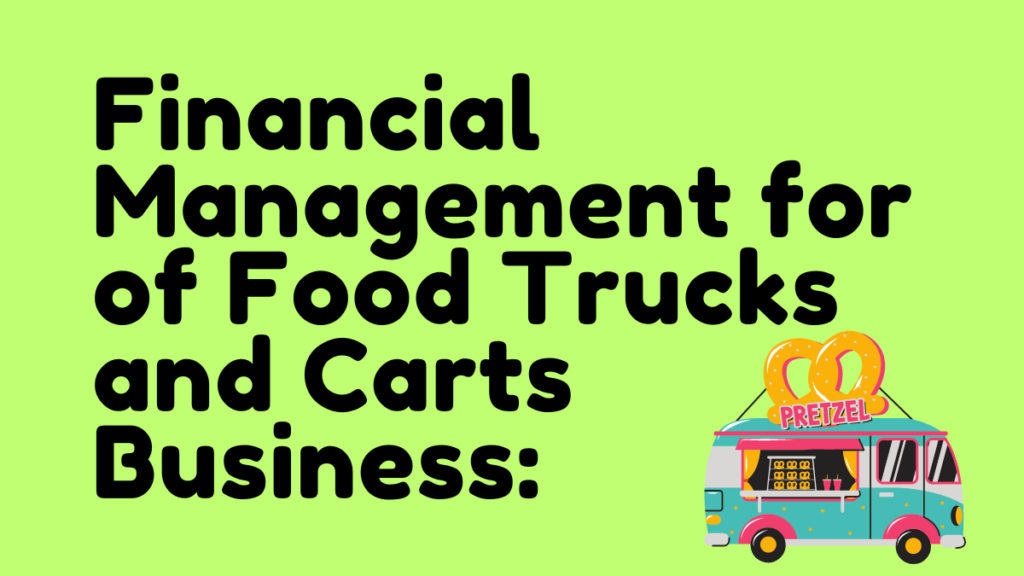
· Budgeting:
Implementing sound budgeting practices is essential for financial stability. Monitoring expenses, setting realistic revenue goals, and adjusting budgets as needed contribute to long-term profitability.
| Aspect | Estimated Investment |
| Vehicle Purchase | – Food Truck or Cart: $30,000 – $100,000 |
| – Depends on size, condition, and customization. | |
| Kitchen Equipment | – Cooking appliances, refrigeration, etc.: $10,000 – $20,000 |
| – Cost varies based on equipment quality and specifications. | |
| Vehicle Customization | – Interior and exterior branding: $5,000 – $15,000 |
| – Includes customization for branding and menu display. | |
| Permits and Licenses | – Licensing and health permits: $2,000 – $5,000 |
| – Costs vary based on local regulations and requirements. | |
| Initial Stock and Ingredients | – Food and beverage inventory: $5,000 – $10,000 |
| – Depending on the menu and initial stock levels. | |
| Marketing and Branding | – Logo design, marketing materials: $2,000 – $5,000 |
| – Investment in creating a strong brand identity. | |
| Technology and POS System | – Point of Sale (POS) system, website: $3,000 – $8,000 |
| – Includes setup for online orders and payment processing. | |
| Insurance | – Liability and vehicle insurance: $2,000 – $5,000 |
| – Essential for protection against potential risks. | |
| Operating Capital | – Initial working capital: $10,000 – $20,000 |
| – To cover expenses like fuel, utilities, and unforeseen costs. | |
| Miscellaneous | – Contingency and unforeseen expenses: $5,000 – $10,000 |
| – Buffer for unexpected costs during the startup phase. | |
| Total Estimated Investment | $64,000 – $193,000 |
This table provides a rough estimate of the expected investment required to start a food truck business in a mid-sized city. Actual costs can vary based on factors such as location, size of the operation, and specific business needs. Entrepreneurs are advised to conduct detailed market research and seek quotes from suppliers to get a more accurate estimate tailored to their unique circumstances.
· Pricing Strategies:
Developing effective pricing strategies requires a balance between covering costs and offering competitive prices. Understanding the market and adjusting prices based on customer feedback and demand is crucial.
· Profit Margins:
Calculating and optimizing profit margins ensures that the business remains sustainable. Regularly reviewing financial performance and making data-driven decisions contributes to long-term profitability.
Community Engagement of Food Trucks and Carts Business:
· Building a Loyal Customer Base:
Engaging with the local community is integral to building a loyal customer base. Participating in community events, supporting local causes, and fostering relationships with customers contribute to brand loyalty.
· Involvement in Local Events:
Actively participating in local events, festivals, and markets increases visibility and attracts new customers. These opportunities also provide a platform to showcase the unique offerings of the food truck.
· Social Responsibility:
Embracing social responsibility initiatives, such as environmentally friendly practices or partnerships with local charities, enhances the reputation of the business. Consumers increasingly appreciate businesses with a commitment to social and environmental causes.
Scaling Up and Diversification of Food Trucks and Carts Business:
· Expanding the Fleet:
Successful food truck businesses may consider expanding their fleet to reach more locations and cater to larger events. Scaling up requires careful planning and consideration of logistical challenges.
· Adding New Menu Items:
Diversifying the menu can attract a broader customer base. Introducing new and innovative menu items keeps the offerings exciting and encourages repeat business from existing customers.
· Exploring Catering Opportunities:
Expanding into catering services is a natural progression for a thriving food truck business. Catering for events, parties, and corporate functions can provide additional revenue streams.
Legal and Regulatory Considerations of Food Trucks and Carts Business:
· Staying In Compliance:
Adhering to local, state, and federal regulations is crucial for the legal operation of a food truck. Regularly updating knowledge of relevant laws and regulations ensures ongoing compliance.
· Navigating Zoning Laws:
Understanding zoning laws and restrictions is essential for selecting suitable locations for operation. Navigating these regulations prevents legal complications and ensures the longevity of the business.
· Tax Implications:
Being aware of tax obligations and seeking professional advice ensures compliance with tax laws. Proper financial management includes setting aside funds for taxes and understanding eligible deductions.
Pros & Cons of Food Trucks and Carts Business:
| Pros | Cons |
| 1. Lower Initial Investment | 1. Seasonal Impact |
| – Food trucks require less startup capital, | – Weather and seasons can impact foot traffic and |
| making it accessible for entrepreneurs. | sales, leading to fluctuations in revenue. |
| 2. Mobility and Flexibility | 2. Competition |
| – The ability to move to different locations | – Increasing popularity means more competition, |
| allows for targeting diverse markets. | requiring innovative strategies to stand out. |
| 3. Targeted Marketing | 3. Weather and External Factors |
| – Food trucks can strategically position | – Adverse weather conditions can disrupt business |
| themselves for maximum exposure. | operations and impact customer turnout. |
| 4. Adaptability to Trends | 4. Limited Space and Staffing |
| – Quick adjustment to changing consumer | – Limited space poses challenges in staffing and |
| preferences keeps the menu fresh. | operational efficiency. |
| 5. Community Engagement | 5. Risk of Regulatory Compliance Issues |
| – Building a loyal customer base through | – Navigating complex regulations requires ongoing |
| community events and local support. | attention to avoid legal complications. |
| 6. Tech and Innovation | 6. Dependency on Location |
| – Embracing technology enhances customer | – Success heavily relies on choosing the right |
| experience and operational efficiency. | locations with sufficient foot traffic. |
| 7. Diversity in Cuisine | 7. Initial Investment for Quality Equipment |
| – Meeting the demand for diverse and unique | – Investing in high-quality kitchen equipment can |
| cuisines attracts a broader customer base. | be a significant upfront cost. |
| 8. Flexibility in Menu | 8. Permitting Challenges |
| – Quick adaptation to customer preferences | – Acquiring and renewing permits can be a time- |
| and food trends allows for menu innovation. | consuming and bureaucratic process. |
| 9. Scalability and Diversification | 9. Impact of External Events |
| – Successful food trucks can expand their | – External events, such as economic downturns or |
| fleet and explore catering opportunities. | public health crises, can affect sales. |
| 10. Loyalty Programs | 10. Limited Operating Hours |
| – Implementing loyalty programs encourages | – Operating hours may be limited compared to |
| repeat business and customer loyalty. | traditional restaurants, affecting potential |
| revenue. |
Frequently Asked Questions related to Food Truck or Cart Business:
| Question | Answer |
| What is a food truck or cart business? | A food truck or cart business involves serving food from a mobile vehicle or cart, offering flexibility and the ability to reach different locations. |
| Why are food trucks and carts popular? | Their popularity is attributed to mobility, lower startup costs, adaptability to trends, and the ability to cater to the diverse and changing tastes of consumers. |
| What are the advantages of a food truck business? | Advantages include mobility, lower initial investment, targeted marketing, and adaptability to culinary trends. |
| How do food trucks target their audience? | Food trucks strategically position themselves in areas with high foot traffic, at events, and on social media platforms to reach their target demographic. |
| How does a food truck compare to a traditional restaurant? | Food trucks require a lower initial investment and offer more flexibility in location compared to traditional restaurants. |
| What market trends contribute to food truck profitability? | Shifting consumer preferences, urbanization, and a desire for diverse cuisines contribute to the growing demand for food trucks. |
| What are the startup costs for a food truck? | The startup costs include the vehicle, kitchen equipment, and licensing. While lower than a traditional restaurant, ongoing costs should be considered for a comprehensive analysis. |
| How important is location for a food truck business? | Location is crucial for success. Identifying areas with high foot traffic, events, or popular destinations can significantly impact sales and customer reach. |
| What licenses and permits are needed for a food truck? | Food trucks need licenses and permits to comply with health and safety regulations. Navigating the regulatory landscape is essential to avoid legal complications. |
| How do food trucks handle health and safety compliance? | Maintaining high standards of hygiene and safety is a priority. Adhering to health codes and regulations ensures both the business and customers are protected. |
| How can food trucks engage with their local community? | Community engagement involves participating in local events, supporting causes, and building relationships. This fosters brand loyalty and strengthens the business’s ties to the community. |
| What role does social media play for food trucks? | Social media platforms like Instagram and Facebook are crucial for marketing. They help showcase the menu, announce locations, and engage with customers to build a strong online presence. |
| How do food trucks differentiate themselves in a crowded market? | Differentiation is achieved through unique offerings, exceptional customer service, and effective marketing strategies that highlight the distinctive aspects of the food truck. |
| How do food trucks deal with seasonal impact? | Seasonal impact is addressed by adapting menus with seasonal items and planning strategies to mitigate the effects of weather on foot traffic and sales. |
| How can food trucks handle competition in the market? | Standing out in a competitive market involves offering unique products, effective marketing, and consistently delivering a positive customer experience. |
| How do external factors like weather affect food trucks? | Weather challenges are mitigated through contingency plans, diversifying locations during unpredictable weather, and adapting to the needs of customers during different seasons. |
| How important is customer feedback for food trucks? | Customer feedback is invaluable for improvement. Food trucks actively listen to and address customer feedback to enhance their offerings and better meet customer expectations. |
| Are food trucks affected by zoning laws? | Understanding and adhering to zoning laws is essential for selecting suitable locations. Navigating these regulations prevents legal complications and ensures long-term business success. |
| How do food trucks handle cashless transactions? | Embracing digital payments and offering various cashless transaction options improves efficiency and customer service, catering to a diverse customer base in the modern era. |
| What is the role of technology in food truck businesses? | Technology, such as mobile apps and data analytics, enhances customer experience and provides insights into preferences. This helps in making informed business decisions and staying competitive. |
| How do food trucks approach financial management? | Sound financial management involves budgeting, setting realistic revenue goals, and optimizing profit margins through regular review and adjustment of financial strategies. |
| Can food trucks scale up and diversify their offerings? | Successful food truck businesses can scale up by expanding their fleet, diversifying their menu, and exploring catering opportunities to reach more customers and generate additional revenue. |
| What legal considerations should food truck owners be aware of? | Staying in compliance with local, state, and federal regulations, understanding zoning laws, and managing tax implications are critical legal considerations for food truck entrepreneurs. |
| How do food trucks contribute to social responsibility? | Food trucks can contribute to social responsibility through environmentally friendly practices, supporting local charities, and engaging in initiatives that benefit the community. |
| Are food trucks a profitable long-term business? | With the right combination of innovation, customer engagement, and strategic decision-making, food trucks have the potential to be a profitable and sustainable long-term business venture. |
Conclusion:
The profitability of food truck and cart businesses is influenced by a myriad of factors, including strategic planning, adaptability, marketing, and financial management. Understanding the advantages, challenges, and operational considerations is crucial for entrepreneurs entering this dynamic industry.
Final Thoughts on Profitability:
As the culinary landscape continues to evolve, food trucks and carts remain a viable and profitable business model. With the right combination of innovation, customer engagement, and strategic decision-making, entrepreneurs can carve out a successful niche in the world of mobile dining.
In conclusion, the journey of a food truck or cart entrepreneur is an exciting and rewarding one, filled with opportunities for creativity, community engagement, and financial success.
Disclaimer:
The information provided is for general informational purposes only and should not be considered as professional advice; readers are encouraged to seek appropriate professional guidance for their specific circumstances.
